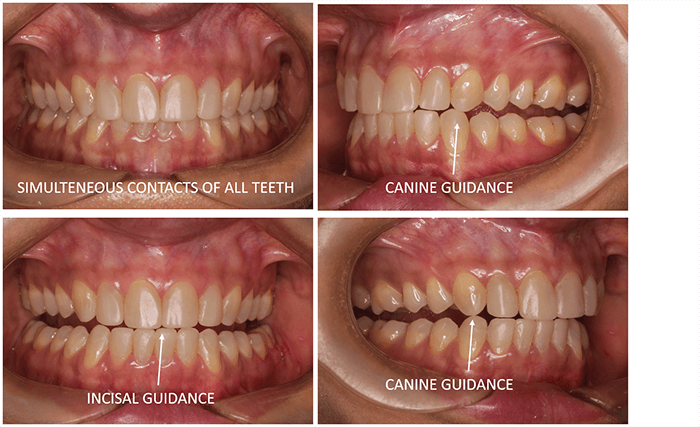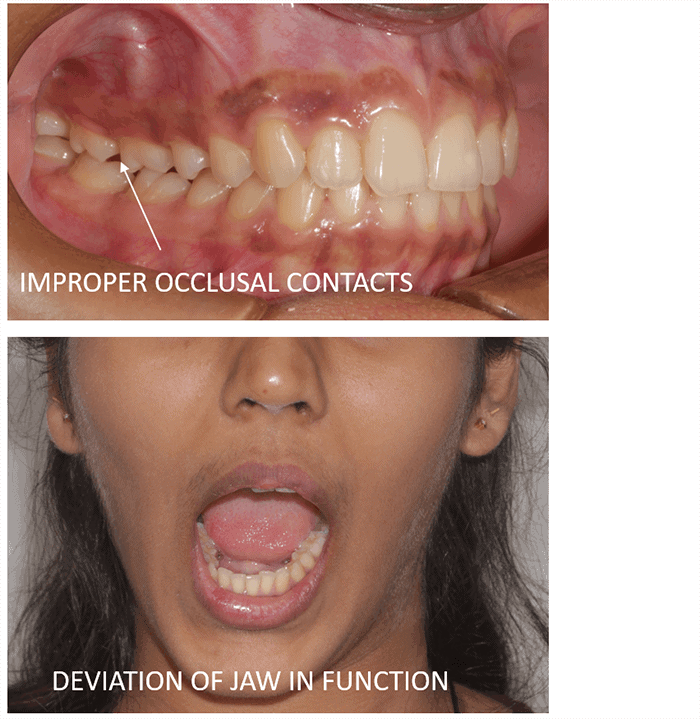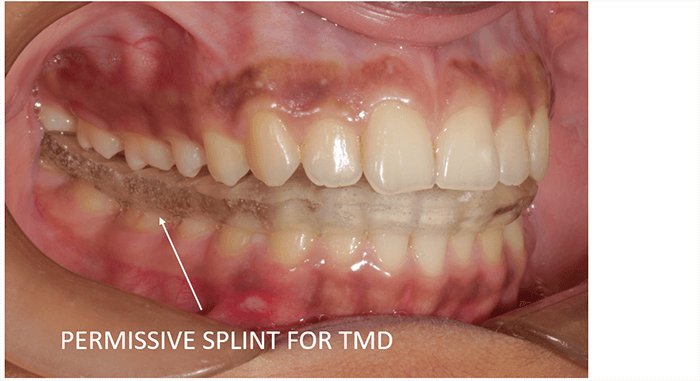
Entire stomatognathic system consisting of teeth, their supporting bone, jaw bones, jaw muscles, both jaw joints are made to function in harmony. Normal functions of the jaws such as chewing, speaking, swallowing etc are possible due to synchronization of movements of the jaws, muscles and jaw joints along with proper intercuspation of teeth into each other. Normal functions of the jaws are carried out effectively and involuntarily if these elements are in best of their health. Even if one of these elements is not in good health or not oriented in natural relationship to each other, the functional occlusion is affected.
Normal occlusion has following features.
- Simultaneous equal intensity contacts of all the teeth in centric relation when condyle – disk assemblies are completely seated in their respective sockets
- Normal overjet and overbite allowing mutually protective occlusal scheme
- Mutually protected occlusion demonstrating incisal guidance and cuspid rise occlusion as well as absence of balancing side interferences
- Absence of abnormal teeth wear
- Absence of jaw deviation , pain in muscles of mastication and other symptoms of TMD


Sometimes the teeth may appear straight and the smile may be good but still, there may be abnormal dental relations which affect function. You may see an Orthodontist if you see following symptoms in your teeth and jaws –
- Abnormal wear or chipping away of teeth where teeth gradually become smaller due to friction / premature contacts with opposing teeth
- Sudden, unexplained migration / shifting of front teeth, creating spaces in teeth, gum recession or teeth mobility
- Pain in jaw joints, muscles of mastication, constant headaches
- Pain behind the eyes, watery eyes
- Difficulty in opening jaws / lock jaws
- Abnormal deviation of jaws while opening and closing jaws
- Clicking / noises coming from jaw joints in function
- Bruxism / grinding of teeth in sleep
If the above symptoms are noticible in your occlusion, you need to visit an Orthodontist to correct your occlusion even though your teeth appear to be straight and aligned. Orthodontist who is trained in TMJ treatment will diagnose your condition and recommend specialized TMJ splints to relieve your symptoms and coordinate your jaw muscles and the joints. After the splint therapy restorative or corrective treatment with orthodontics is needed to restore the occlusion.


